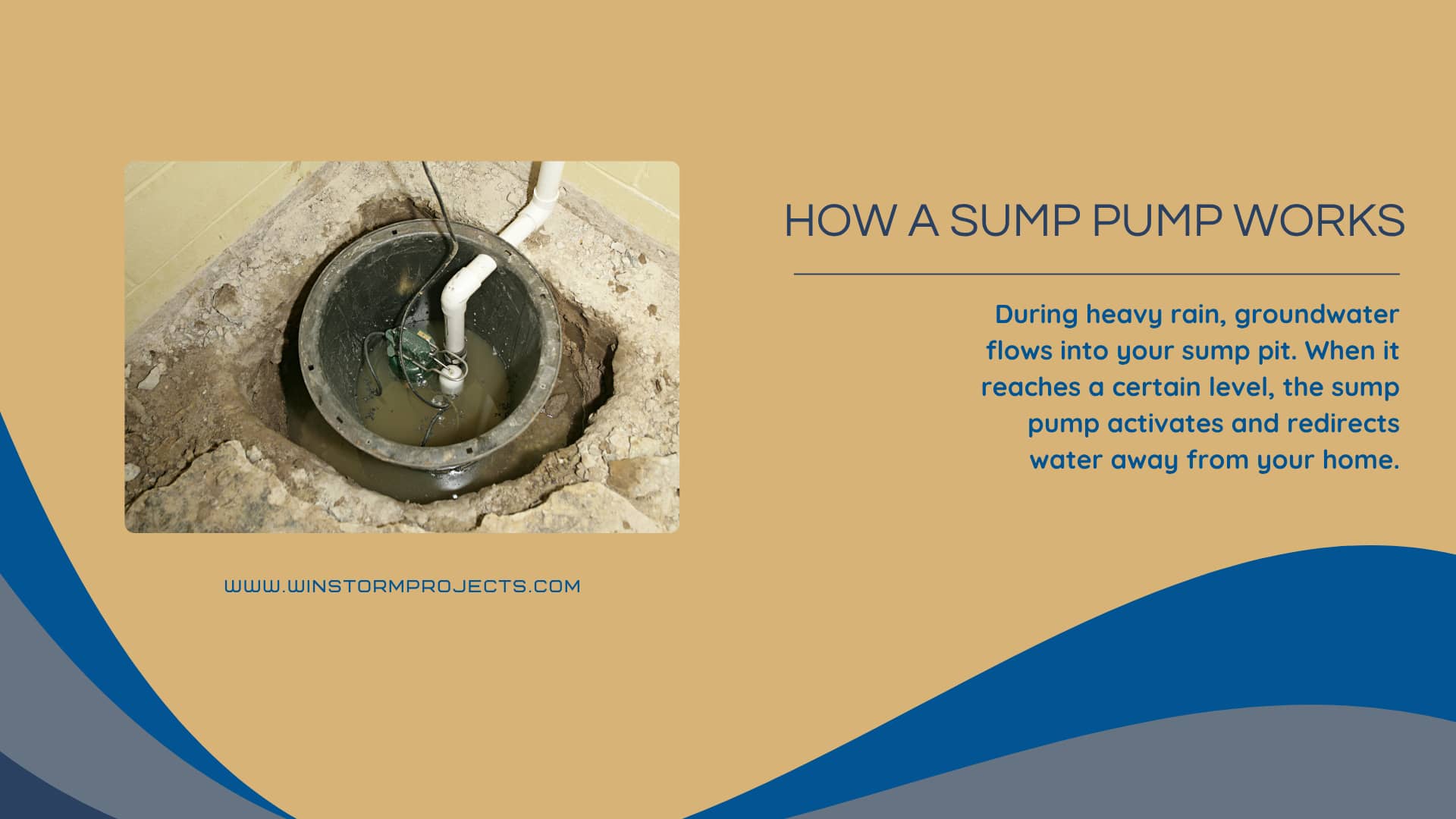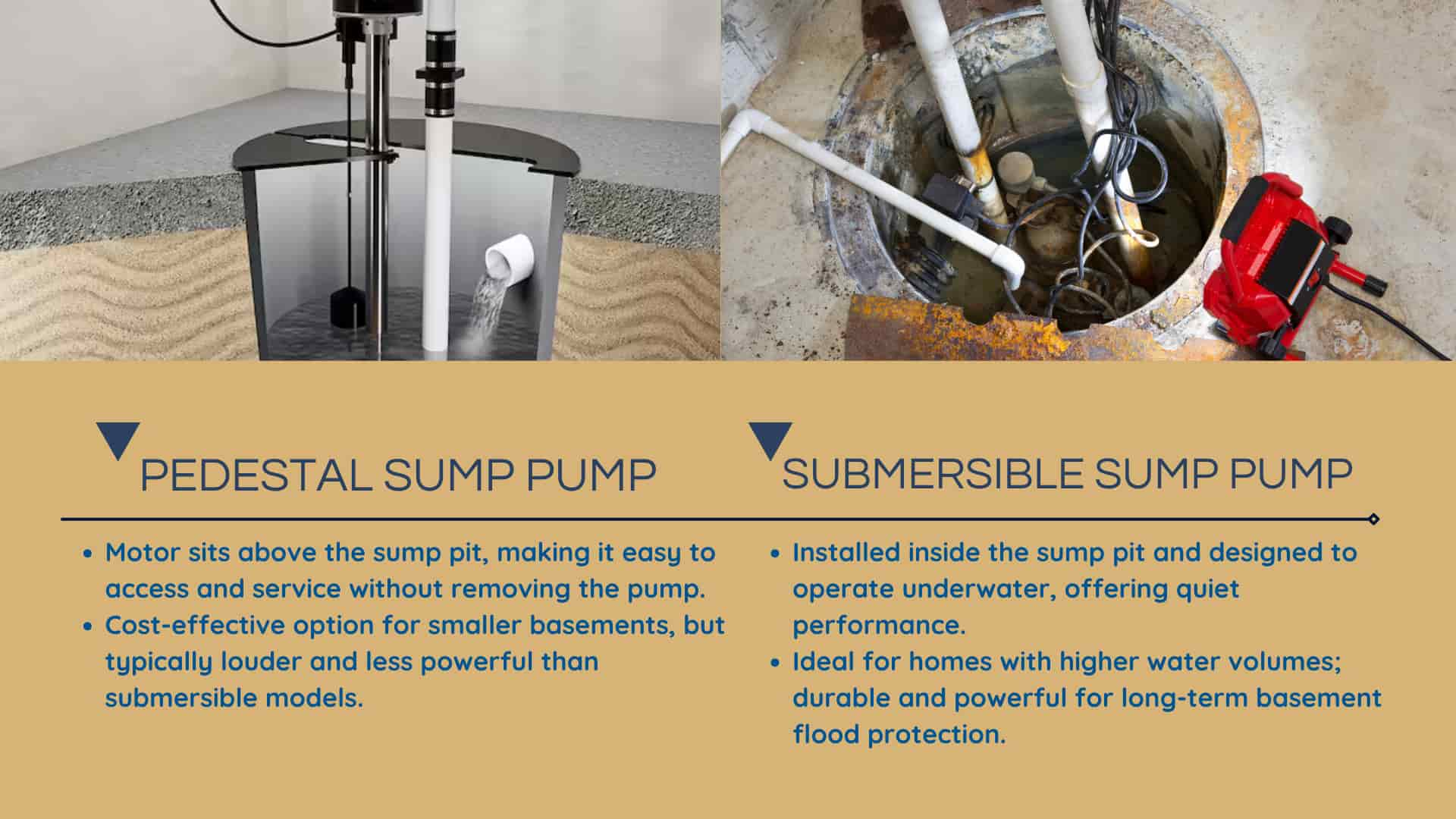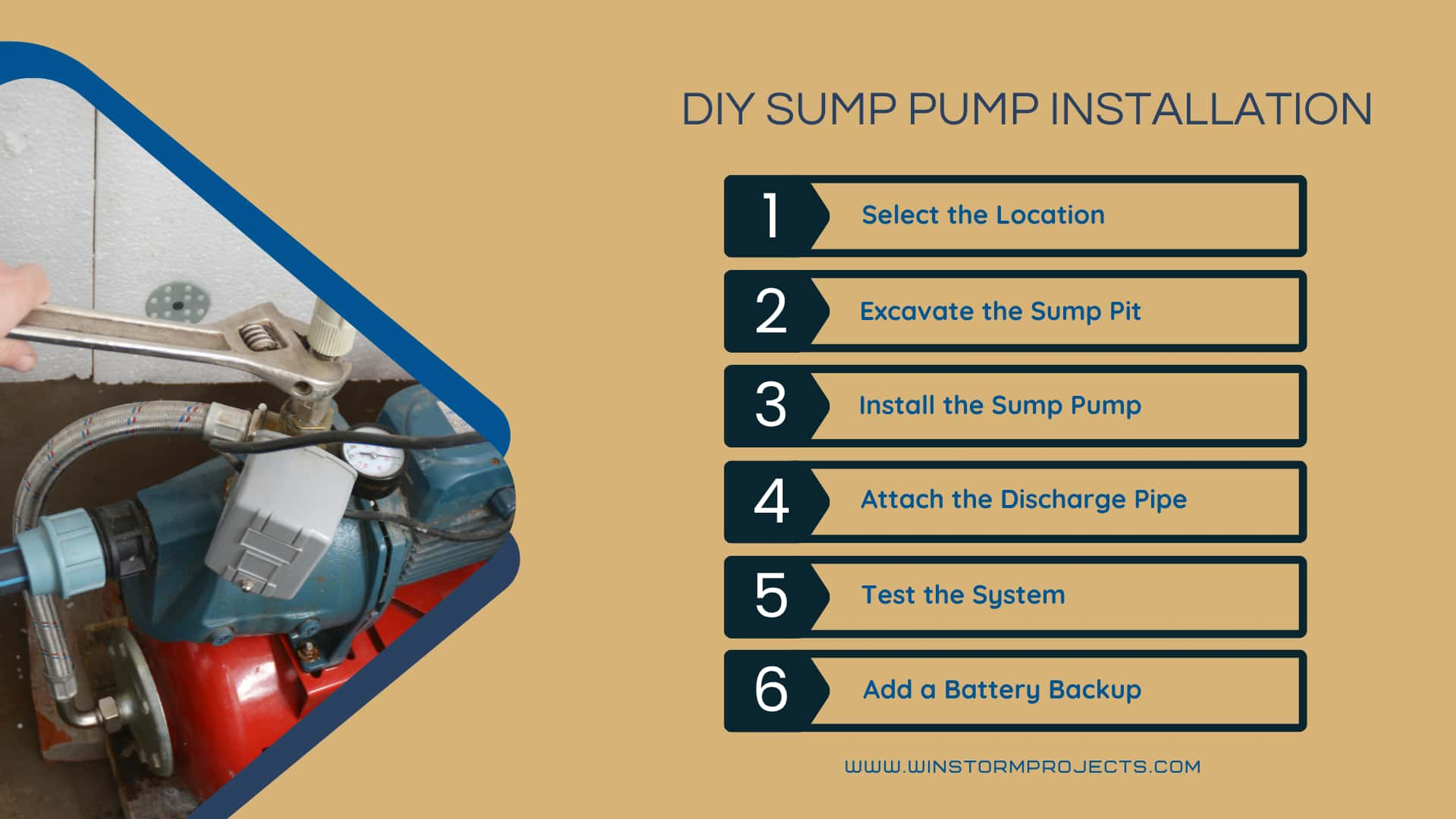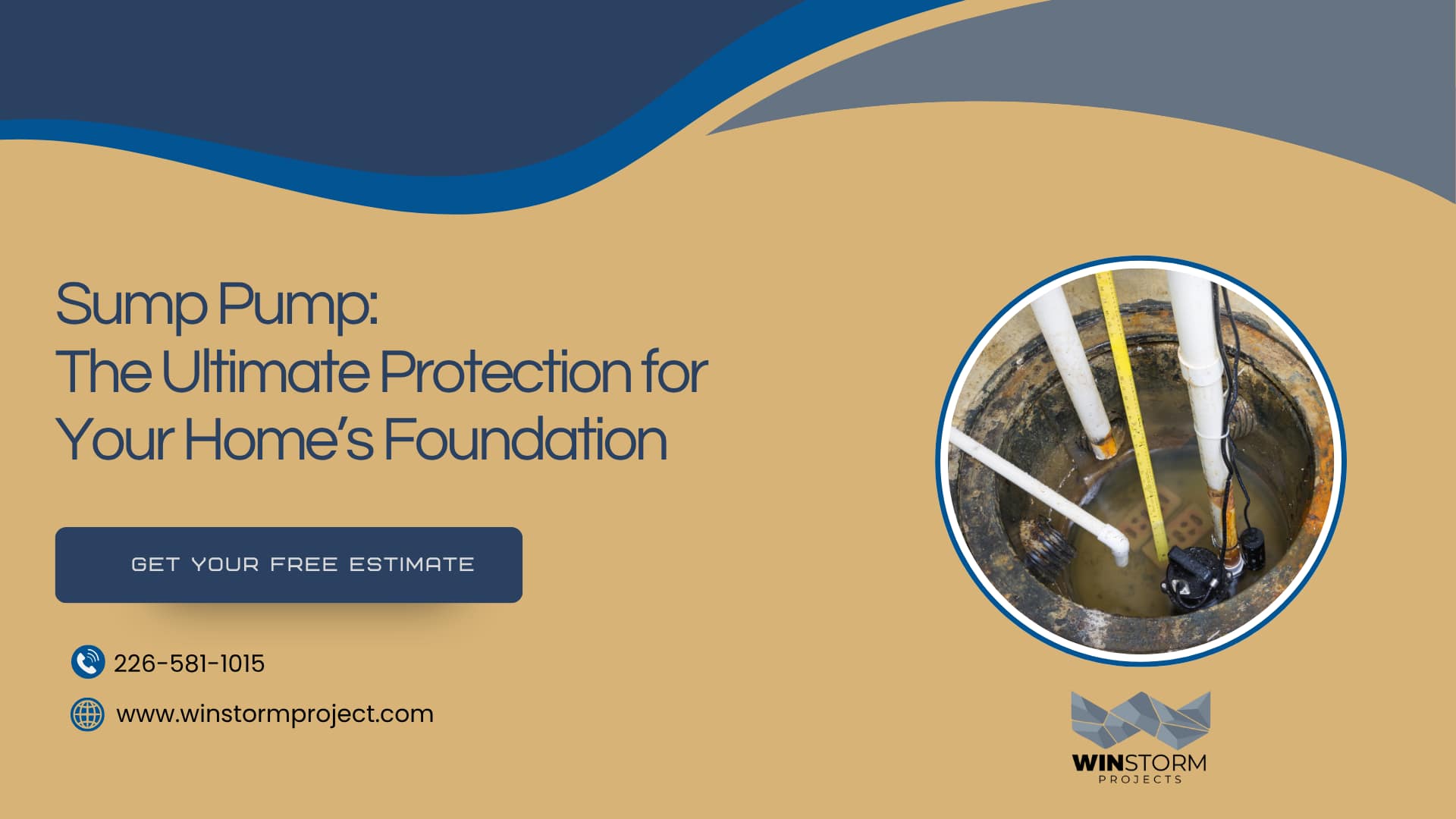Water damage is one of the most costly and frustrating problems a homeowner can face. In areas like Guelph, Kitchener, and Waterloo—where spring thaw, heavy rain, and saturated soil are common—a sump pump acts as your first line of defense against basement flooding and foundation issues.
A reliablesump pump system helps remove excess water from your basement or crawl space, redirecting it away from your home’s foundation to keep your living space dry and safe. In this ultimate guide, you’ll learn everything you need to know about sump pumps—from how they work and the types available to the installation process, maintenance tips, and why having a battery backup can save your home during a power outage.
How Does a Sump Pump Work?

To truly protect your home, you need to understand how a sump pump operates.
What Is a Sump Pump?
A sump pump is a mechanical device installed in a sump pit or basin at the lowest point of your basement or crawl space. It collects groundwater through drains or natural migration. When the water level in the pit rises to a certain point, the pump activates and discharges the water away from your home through a discharge pipe.
Why You Need a Sump Pump in Ontario
In Southern Ontario, especially in the Guelph-Kitchener-Waterloo area, local soil retains water and creates a higher risk for basement flooding. A sump pump for your basement keeps moisture at bay, reducing the risk of mould growth, structural damage, and high humidity. Installing a battery backup sump pump is highly recommended here due to frequent power outages during storms.
Types of Sump Pumps: Choose the Right one for Your Home

Knowing the different sump pump options helps you select the best one for your needs.
Pedestal Sump Pump
A pedestal sump pump has its motor mounted above the pit, making it easier to service. These are typically less expensive but noisier and better suited for smaller basements or areas where the sump basin is narrow.
Submersible Sump Pump
Asubmersible sump pump is installed inside the sump pit and can operate underwater. These pumps are quieter, more powerful, and ideal for high-volume water removal. They’re often considered the best sump pump option for long-term durability and performance.
Battery Backup Sump Pump
A backup sump pump powered by a battery backup is a must-have in Ontario. If your primary pump fails or there’s a power outage, the backup automatically kicks in to keep water out of your basement. Every home should have a pump with a battery backup to avoid disaster when the main system goes offline.
Key Benefits of a Sump Pump System
Installing a sump pump in your home comes with several major benefits.
1. Flood Prevention
The primary purpose of a sump pump is to prevent flooding. When heavy rainfall or melting snow overwhelms your property, the submersible pump quickly removes water from your basement, preventing damage to floors, drywall, and furniture.
2. Moisture and Mould Control
Consistent water removal helps regulate humidity, minimizing the risk of mould and mildew. This not only improves air quality but also contributes to your home’s structural health and overall comfort.
How to Install:

If you’re looking toinstall a sump pump, it’s important to do it right. While professional help is recommended, here’s a basic overview of the process:
Tools You’ll Need
- Shovel
- Drill
- PVC pipes and fittings
- Pipe cutter
- Sump pump check valve
- Tape measure & level
- Safety glasses
Step-by-Step Installation
- Select the Location
Choose the lowest point in your basement or crawl space where water collects. - Excavate the Sump Pit
Dig a sump pit around 24″ deep and 18″ wide to fit a submersible sump pump. - Install the Sump Pump
Place the pump into the pit, connect it to a check valve, and ensure it’s sitting level. - Attach the Discharge Pipe
Run a PVC pipe from the pump to discharge water away from your home’s foundation. Ensure proper slope for drainage. - Test the System
Fill the pit with water to test if the pump activates and discharges properly. - Add a Battery Backup
For added security, install a battery backup to ensure protection during a power outage.
What Makes Up a Sump Pump System?
Understanding the parts of your sump pump system helps with troubleshooting and maintenance.
- Sump Pump: The core mechanical unit that moves water.
- Sump Pit / Basin: The water collection area that houses the pump.
- Discharge Pipe: Channels water away from your home.
- Check Valve: Prevents backflow into the pit after water is pumped out.
- Battery Backup Sump Pump: Activates during power loss to prevent sump pump failure.
- Float Switch: Activates the sump pump’s motor when water reaches a set level.
- Alarms/Sensors: Notify you of high water or pump failure.
Maintenance Tips to Prevent Sump Pump Failure
Keeping your sump pump in good condition ensures your basement waterproofing system works when you need it most.
Regular Maintenance Checklist
- Test the float switch monthly by adding water to the pit.
- Ensure the unit is plugged into a GFCI outlet and the circuit hasn’t tripped.
- Clear debris from the sump basin and intake screen.
- Check that the battery backup is charged and functional.
Common Sump Pump Issues
- Clogs: Debris in the pit or pipe can block water flow.
- Mechanical Failures: Aging pumps or worn-out parts can fail unexpectedly.
- Electrical Issues: A power outage or tripped breaker will shut the system down.
- Pump Isn’t Activating: This may indicate a faulty float switch or motor.
Conclusion: Why You Need a Sump Pump for Your Basement
A well-maintained sump pump is the key to preventing basement flooding, managing moisture, and preserving your home’s foundation. Whether you’re installing your first pump or upgrading to a battery backup sump pump, having a reliable sump pump is essential in Southern Ontario.
Don’t wait for the next storm to test your system. Invest in the best sump pump for your needs, follow proper sump pump installation practices, and stay on top of maintenance. It’s one of the smartest ways to protect your home from costly water damage—today and in the future.
Frequently Asked Questions
What is a sump pump and how does it work?
A sump pump is installed in a pit in your basement or crawl space. When water enters the pit, the pump removes it to prevent flooding.
Why are sump pumps necessary in Ontario?
Due to frequent rain, snowmelt, and water-retaining soil, Ontario homes face high flood risk. A sump pump mitigates this, keeping your basement dry.
Which type of sump pump is best for my home?
Submersible pumps are best for quiet, powerful operation. A pedestal pump is easier to service but louder. Always add a battery backup for emergencies.
Can I install a sump pump myself?
Yes, if you’re handy. Just be sure to follow proper steps and local codes—or hire a pro to ensure it’s done right.
How often should I maintain my sump pump?
Check it monthly, especially the float switch and battery backup. Clean the sump pit seasonally and test before heavy rainfall.

